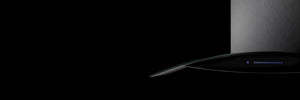 Robinhoodnz
Robinhoodnz

It's important that your rangehood has the right ducting system so 'dirty' air can be expelled outside. Uniduct® rangehood ducting systems have been developed to clear the air quickly and quietly. The kits are simple to install and designed to fit any type of rangehood.
Where does the dirty air go?
Rangehoods are designed to remove steam, grease and odours from your kitchen to help keep your home healthy, hygienic and smelling sweet. Once this dirty air has entered the rangehood, it can do one of two things:
- Exit to the outside through the ducting that connects your rangehood to the exterior of your house. This is the preferred method of air removal.
- Recirculate through charcoal filters, which clean the air before it’s returned to the kitchen. This type of air removal is only used when ducting isn’t possible because of how the kitchen is configured.
How does ducting work?
Ducted rangehoods use aluminium filters to catch large particles of fat and grease before expelling steam and odours to the exterior of the house - either through the wall or roof. The filters are washable in the dishwasher and regular washing is important to ensure that they don't inhibit air movement.
Ducting Tips
- Ducting should be planned in the earliest stages of kitchen or house design. At the very latest, it should be planned before you choose your rangehood.
- When deciding where to locate your cooktop and rangehood, remember that the shortest and most direct route to the air exit point will be the most efficient.
- Rigid components are more efficient than flexible and semi-rigid ducting, which cause some degree of air friction and turbulence.
- If flexible ducting must be used, keep it as taut and straight as possible.
- Don't discharge exhaust air into existing chimneys or flues that carry combustible products from other sources.
- A competent handyman could install wall (rear) mounted ducting. Top mounted ducting should be installed by a qualified plumber or roofer because waterproofing will be required.
| Type of ducting | Why? | |
|---|---|---|
| GOOD | Flexible | Flexible ducting is a solution for difficult installations. It needs to be kept as taut as possible, to avoid excess noise and air friction. |
| BETTER | Semi-rigid | Semi-rigid ducting is your next best option. It is preferable to flexible ducting, in terms of rangehood performance and noise levels. |
| BEST | Rigid ducting | Rigid ducting is ideal because it allows a smooth passageway for the air. It preserves rangehood performance by reducing air turbulence; it's also the quietest option. |
Universal ducting kits
Uniduct rangehood ducting systems have been developed to clear the air quickly and quietly using either BETTER or BEST categories of ducting. The kits contain all the components you need, are simple to install and designed fit any type of rangehood.
SEE ALL UNIDUCT KITS AND ACCESSORIESRecirculation tips

Tip 1
These filters need to be replaced regularly (every two to four months) or extraction performance is impaired. The filters cannot be washed and re-used.

Tip 2
Fully saturated charcoal filters can become a barrier to air movement and limit the performance of your rangehood; they can also be a fire danger when laden with grease.

Tip 3
Replacement filters are available from Robinhood stockists.
With recirculating rangehoods the air is cleaned before it's recirculated into the kitchen. The air travels through charcoal filters which absorb odours, grease and steam.



